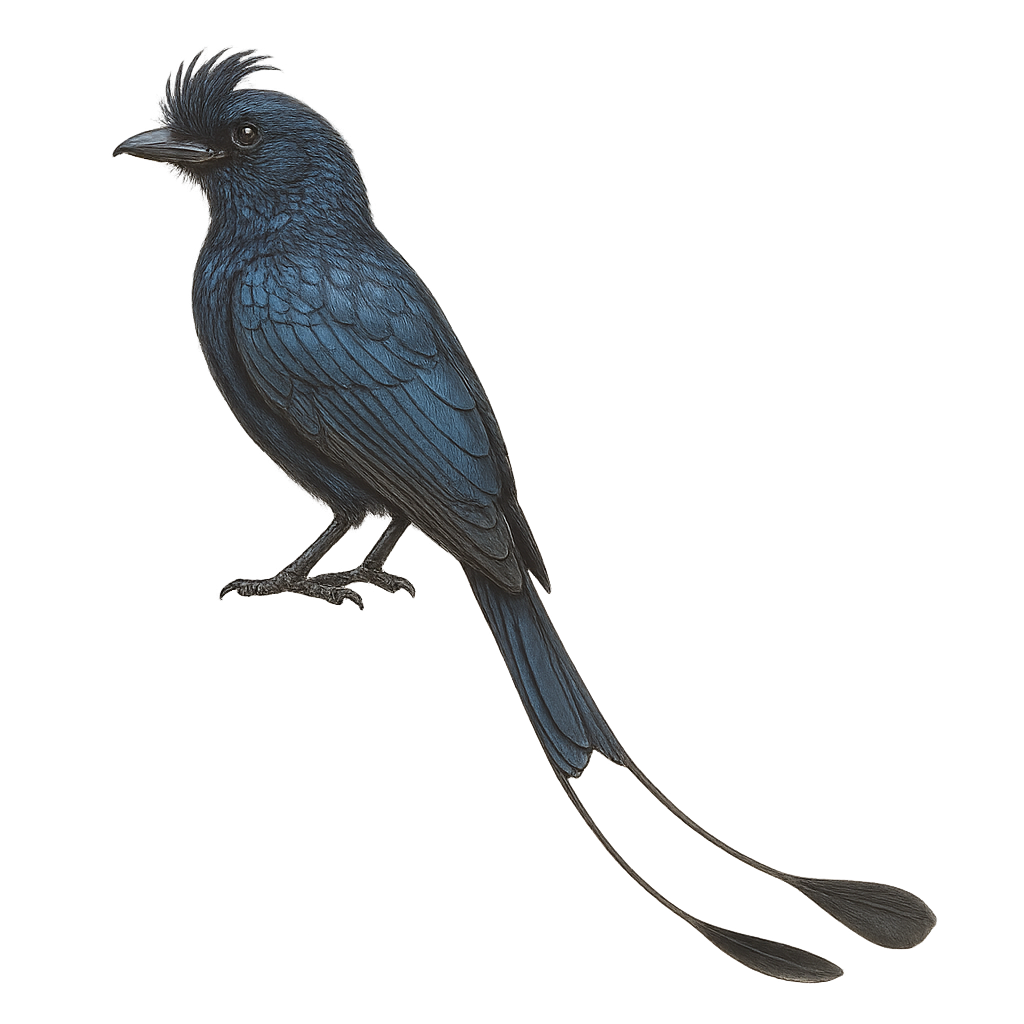Your wildlife photography guide.
Explore the greater racket-tailed drongo in detail, study its behavior, prepare your shots.
Where to observe and photograph the greater racket-tailed drongo in the wild
Learn where and when to spot the greater racket-tailed drongo in the wild, how to identify the species based on distinctive features, and what natural environments it inhabits. The WildlifePhotographer app offers tailored photography tips that reflect the greater racket-tailed drongo’s behavior, helping you capture better wildlife images. Explore the full species profile for key information including description, habitat, active periods, and approach techniques.
Greater Racket-tailed Drongo
Scientific name: Dicrurus paradiseus

IUCN Status: Least Concern
Family: DICRURIDAE
Group: Birds
Sensitivity to human approach: Suspicious
Minimum approach distance: 10 m
Courtship display: March to April
Incubation: 17-19 jours
Hatchings: March to May
Habitat:
Tropical forests, subtropical forests, mangroves
Activity period :
Primarily active during the day, with peak activity in the morning and late afternoon.
Identification and description:
The Greater Racket-tailed Drongo, or Dicrurus paradiseus, is a striking bird known for its long tail feathers shaped like rackets. It is predominantly black with metallic blue and green sheen, and features a distinctive crest on its head. This bird is renowned for its intelligence and ability to mimic the sounds of other birds and animals. It inhabits the tropical and subtropical forests of South and Southeast Asia, where it primarily feeds on insects. The Greater Racket-tailed Drongo is often seen following groups of primates to catch insects disturbed by their movement. It is also territorial and can be aggressive towards intruders.
Recommended lens:
400 mm – adjust based on distance, desired framing (portrait or habitat), and approach conditions.
Photography tips:
To photograph the Greater Racket-tailed Drongo, it is advisable to use a telephoto lens of at least 400mm to capture the details of its long tail feathers and shiny plumage. Look for it in tropical and subtropical forests, where it is often active during the day. Be patient and discreet, as this bird can be suspicious. Try to photograph it in flight to capture the beauty of its racket feathers. Use a tripod to stabilize your camera and achieve sharp images.
The WildlifePhotographer App is coming soon!
Be the first to explore the best nature spots, track rutting seasons, log your observations, and observe more wildlife.
Already 1 432 wildlife lovers subscribed worldwide

